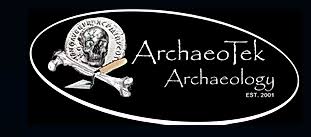
Information from Dr. Andre Gonciar, Director of ArchaeoTek/BioArch Canada:
We still have 1-2 spots available on each session of our integrated Geophysics (GPR) Exploration and Roman Excavation. The program combines an intensive 5-day training program in GPR survey, data acquisition and analysis, with 3 weeks of excavation of a Roman Villa and Settlement in Transylvania (Roman Dacia). The GPR module is designed to offer our participants a very practical, useful and concrete set of professional and research skills that would provide an edge in today’s field/urban survey and exploration job market, together with field archaeology excavation training. Our participants will acquire in a very short time not only the necessary practical and analytical skills to conduct independent GPR field research, but also valuable experience in exploration and excavation theory and practice as pertaining to an archaeological dig.
One of the unique aspects of the program is its comparative approach, as our participants will learn to operated two different GPR systems, equipped with different transducers, respectively at 500MHz and 250MHz peak frequency, in two field configurations, cart and rough terrain. The two GPR antennas and configurations we deploy during this module are the systems of choice in archaeology, forensics and shallow subsurface urban mapping (SUM), for locating buried structures, graves, utilities, root systems, etc., as well as identifying variations in pedology and geology down to about 4-6m (or 13-19ft) depth. The acquired skill set is thus applicable (and transferable) to field research not only in forensics, anthropology, archaeology, cultural resource management (CRM), Classics, and/or history, but also in earth sciences, geology, geography, urban planning, architecture, surveying, civil engineering, environmental engineering, environmental studies, and/or landscaping.
Each field team consists in 3 participants on each system, conducting at least 2 full days of data collecting. Each group will be trained in setting up their own survey grids to optimize data collection and integration, assembling each field system, and collecting the same grid data with each of our two GPRs. Also, our participants will be trained in using SenSoft’s EKKO Software Suite to become proficient in analyzing GPR data, maximizing the results. All the data collected will be analyzed by each GPR crew, comparing, integrating and extrapolating the data/results obtained from both 500MHz and 250MHz antennas.
Concurrently, the Roman Villa and Settlement Excavation offers a very extensive approach to the anthropology and archaeology of the Roman frontier environments, respectively the northern Dacian Provinces (i.e. modern historical Transylvania, Romania), through field work, laboratory analysis and lectures. The integrated outcomes of our various approaches have already yielded extraordinary results: a palatial size villa with a rural built space of ca. one hectare, surrounded by massive fortification walls decorated with exterior and interior frescoes, richly built two-story buildings containing exceptional artifacts (well preserved bronze statues, jewelry, mint condition coins, writing implements, etc.). Our 2021 target excavation, the “central building” of the villa, has already presented us with a very complex and surprising occupation sequence and living practices. Local Roman Provincial realities, born out of economic, cultural, social and political creolization, constant and dynamic negotiation of power, and shifting populations, have outlived the ideological centers that have claimed historical ownership of these regions.
_______________________________________________________________
Program details:
Geophysics (GPR) Exploration and Roman Excavation (4 weeks, integrated GPR and excavation project) - Session Dates: June 6-July 3, 2021; July 4-31, 2021.
GPR Field Applications Workshop (5-day, GPR-only project) - Session Dates: June 13-19, 2021; June 20-26, 2021 July 11-17, 2021; July 18-24, 2021; August 1-7, 2021.
Location: Rapoltu Mare, Transylvania, Romania (research target sites: medieval Uroi Castle, Roman city and castrum of Micia, Roman capital of the Dacian Provinces: Sarmizegetusa Ulpia Traiana)
Website: https://www.archaeotek-archaeology.org/applied-field-geophysics-gpr
Syllabus GPR Module: https://3fab7da4-7e55-4713-888c-16896f7f46e3.filesusr.com/ugd/3ff7f8_4ee7feb2ed704ef7b1a22f797a5301c1.pdf
Syllabus Roman Excavation Module: https://3fab7da4-7e55-4713-888c-16896f7f46e3.filesusr.com/ugd/3ff7f8_e8eee11568124869ba81724a6f81e659.pdf
Contact: Dr. Andre Gonciar at archaeology@archaeotek.org
More details at: https://www.archaeotek-archaeology.org/applied-field-geophysics-gpr